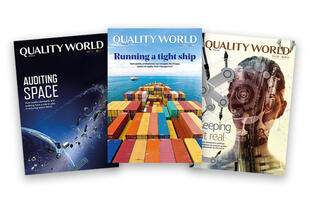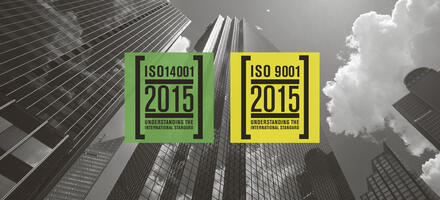
Why the world needs ISO 41001
Progress indicator

The new standard aims to help facilities management teams improve efficiencies across a range of areas, from procurement to operations to maintenance. Chris Craggs explains why it’s needed now more than ever.
If it had not been 15 years in the making, the release of ISO 41001 ‘Facility management — Management systems’ in April might have been intelligently designed to almost perfectly counter the facilities management (FM) trauma and introspection prompted by the Carillion collapse in January. Here is the pathway to collaborative, sustainable, mutually-beneficial provision of workspaces, whether by an in-house team or a contractor.
As it did in fact take 15 years, and the stewardship of ISO TC 267 Chair Scot Stan Mitchell, navigating 27 participating countries and 18 observing countries within the Facility Management technical committee, with the vested interests of some and the cultural diversity of all, it’s nothing short of a miracle. There are 14 pages of standard plus 40 pages of Annex and a number of ancillary standards – not least ISO 41001 – vocabulary!
It was followed, in the same month, by the launch of the Royal Institute of Chartered Surveyors “Strategic FM Framework, RICS guidance note, Global” – authored by David Wilson, another eminent British FM guru – and, whilst not an ISO standard, echoing many of the themes: Risk Management, Resource planning, Resilience and Leadership.
So why is ISO 41001 important?
Firstly, what are we talking about? Facility management is the organisational function that integrates people, place and process within the built environment, with the purpose of improving the quality of life of people and the productivity of the core business.
This means everything from advising on the requirements for the next move to organising security, maintaining the lifts and, possibly, hiring/firing the caterers. With flexible working, office spaces are now calculated on multiple workers per desk.
Today, with workplace being typically the second largest overhead after staff costs and, on the other hand, one of the key differentiators in the “war for talent”, “demand organisations” – the ISO term for internal or external customers that absolutely require the very highest standards of this previously mundane adjunct to their core activities.
Facility management is the organisational function that integrates people, place and process within the built environment, with the purpose of improving the quality of life of people and the productivity of the core business
Sadly, along the way, and in the absence of understanding (some would argue a dereliction of duty by employers/customers – in some instances, government), some sectors of the industry have “taken liberties”. Some of those are in the age-old game of comparing apples with pears, some with so-called “aggressive accounting”. For example, booking all the anticipated five-year contract profits in the first year with no contingency. Others bring to mind issues of governance, such as the board voting dividends and bonuses when not supported by results. The latter perhaps beyond the scope of an ISO standard, but the UK Parliament Work and Pensions Committee report is quite simply jaw-dropping in its excoriation of the leaders (and auditors) of Carillion. A more damning indictment of corporate leadership is difficult to imagine.
There is a real, pressing need for a route through misfeasance and towards a bright future. The pathway is still being laid, but with the help of ISO technical committee 267, the pavings are going down fast.
In fact, the guidance standard ISO 41012 ‘Facility management — Guidance on strategic sourcing and the development of agreements’ was published exactly a year before and has a key philosophical approach contained in the statements under Section 7.1: “That the provision of facilities management is a joint and inter-dependent relationship between demand organisation and service provider”.
In fact, whilst this is an auditable standard, a service provider cannot be audited in isolation from the contract it is running or service it’s providing. You will not see ISO 41001 accreditation on generic corporate letterheads – the standard will be achieved on a specific service provision. And not just on the day of the audit: “Consideration should be given to changes in core business requirements to ensure that mutuality and benefits are sustained throughout the term of the agreement.”
Given the real spur – the opportunity to take a competitive lead – and certainly to put clear water in between engaged organisations and Carillion, it is hoped that early adopters get in very soon and boast about that differentiation, evangelising good practice and challenging the industry and its employers to follow the path to righteousness. With its recent launch on 24 April 2018, auditors are still being trained. There earliest assessments will likely commence in 2019.
There are other standards that appear to fit in very neatly into this growing domain: ISO 44001 ‘Collaborative Business Relationship Management Systems’ (drawing from BS 11000), and ISO 55001 ‘Asset Management’. Both offer useful, structured and complementary footings for a more robust future.
In the same spirit of introducing recognised industry frameworks to help build structure and avoid Carillion-type fiascos, the Royal Institute of Chartered Surveyors are in the process of introducing guidance documents on facilities procurement – as well as the FM extension of the ubiquitous Joint Contracts Tribunal contract used in UK construction.
FM has had a mixed 2018: the worst excesses of mismanagement and governance – and a much more positive plethora of new guidance and standards, led by a uniquely collaborative ISO standard, requiring client and contractor to work together.
Chris Craggs, CQI Affiliate, is CEO of McFT Commercial Kitchen Maintenance
Quality World

Get the latest news, interviews and features on quality in our industry leading magazine.



